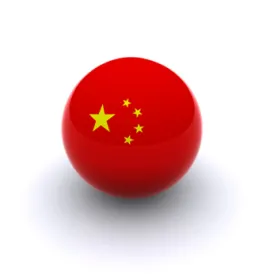An updated version of China’s Catalogue of Industries for Guiding Foreign Investment (“Foreign Investment Catalogue,” or “Catalogue”) went into effect on July 28. The Catalogue has been a key tool used by Chinese policymakers to coordinate foreign investment with the country’s economic development plans and industrial policies. Its categorizations are an important factor in determining the approvals, restrictions, and incentives that might apply to various types of foreign investment projects. In addition to offering some market openings, the July 28 update is of particular significance as it builds on the government’s efforts to implement a “negative list” approach to foreign investment.
Nationwide Negative List
Under a negative list approach, types of foreign investment not mentioned on a negative list are to be given “national treatment”—equal or, in practice, similar treatment to the same type of investment if made by domestic entities (note that this includes both market access openings and restrictions applicable to domestic entities). Last fall, the Chinese government amended four core laws governing foreign-invested enterprises, formally establishing a national negative list approach and thereby rolling out on a nationwide basis an economic reform which had, until then, only been tested in China’s pilot free-trade zones (“FTZs”). According to these amendments and subsequent regulations, types of investments not included on a nationwide negative list may bypass the Ministry of Commerce’s (“MOFCOM’s”) foreign investment approval process and, instead, simply file for the record.
Rather than issuing a separate negative list as originally anticipated, the government soon signaled that the Foreign Investment Catalogue itself would be, at least for the time being, restructured to play that role. The Catalogue is generally divided into three lists which, respectively, place types of investments into the following categories: (1) “encouraged” industry sectors for which the government is actively seeking foreign investment and will therefore provide special advantages to foreign investors (e.g., preferential tax treatment, easier government approval), (2) “restricted” industry sectors for which special restrictions such as a relatively more onerous and time-consuming approval process apply, and (3) “prohibited” industry sectors in which foreign investment is banned altogether. Sectors not specifically listed are considered “permitted.” (Note that items listed in the encouraged category may also have certain restrictions placed on them in the negative list—e.g., investment in the construction and operation of nuclear power plants is encouraged so long as the entity is controlled by Chinese shareholders.) The 2017 Catalogue, for the first time, explicitly refers to the restricted and prohibited categories, collectively, as a negative list.
Market Openings
The new 2017 version of the Catalogue, published on June 28, contains 35 restricted and 28 prohibited line items. These 63 items make up the new negative list, and constitute a reduction of 30 items as compared to the 2015 version of the Catalogue. Further, the category of encouraged investments has been expanded, and now contains 348 line items. Even types of investments that remain on the list may be subject to less onerous restrictions (e.g., the lifting of a requirement that investments be in the form of a joint venture with a Chinese partner).
While the overall statistics indicate a trend of liberalization, some of the eliminated restrictions may only represent the restructuring of the Catalogue to better serve its new function as a negative list that exclusively presents deviations from national treatment (i.e., restrictions on foreign investment beyond those already applicable to domestic investment), rather than actual market openings. For example, the government has deleted restrictions on ivory carving and large-scale theme park construction and management that are already applicable to domestic (and foreign) investment under concurrent laws and regulations. Determining which of the changes reflect restructuring and which represent true liberalization will require a case-by-case analysis.
To illustrate the changes to the Catalogue, we describe here their impact on three sectors:
-
Energy. The new Catalogue expands the scope of encouraged foreign investment into oil, certain types of natural gas exploration, and mine gas utilization by striking language limiting the category only to joint ventures with Chinese partners.
-
High-Value Technology. Through additions to the encouraged list, the new Catalogue demonstrates a greater commitment toward attracting investment in a number of high-value technology sectors. The updated Catalogue adds new line items encouraging investment in smart medical emergency response equipment and water-testing sensors. It also adds line items encouraging investment in virtual and augmented reality research and development, as well as 3D printing equipment.
-
Agriculture. The Catalogue removes a number of restrictions on agricultural product processing, including restrictions on edible oil processing; rice, flour, and raw sugar processing; and corn deep processing. It also adds in new restrictions on the wholesale and acquisition of wheat, corn, and rice.
Note that just a few days before the promulgation of the new Foreign Investment Catalogue, the State Council released an updated negative list for China’s FTZs, which also reduced restrictions on foreign investment. We encourage foreign investors with interests in China to examine changes to both the Foreign Investment Catalogue and FTZ negative list to see how their interests might be affected.
Zhijing Yu contributed to the research and drafting of this article.





 />i
/>i

